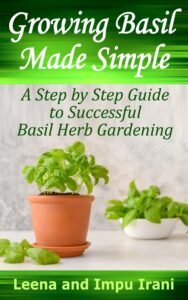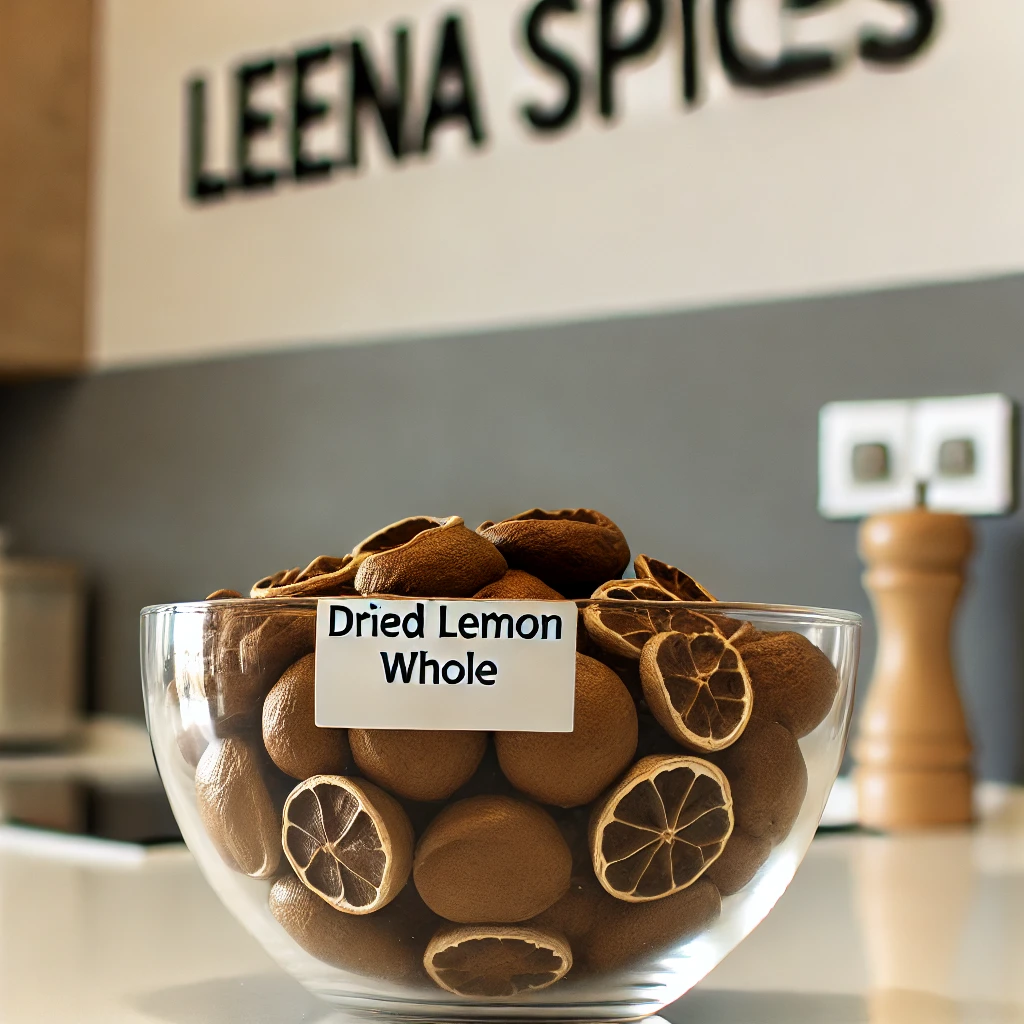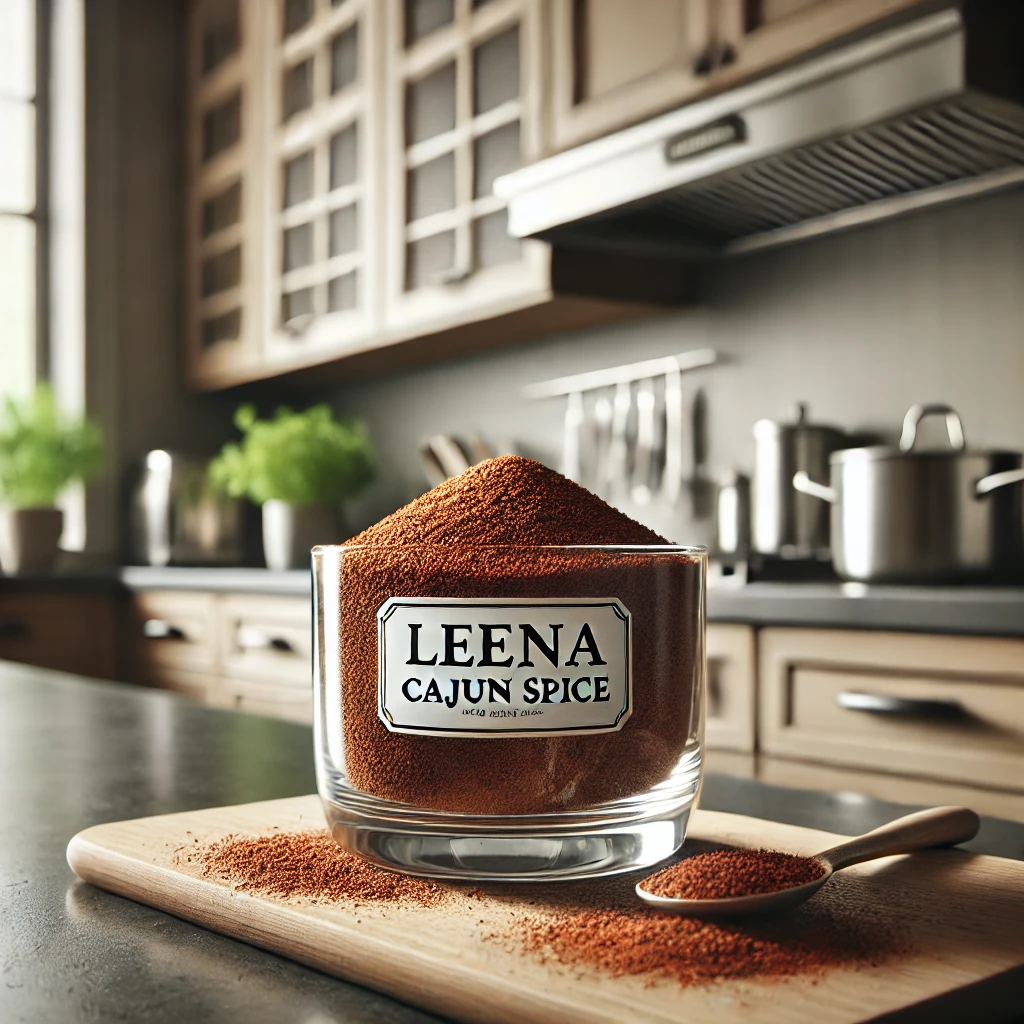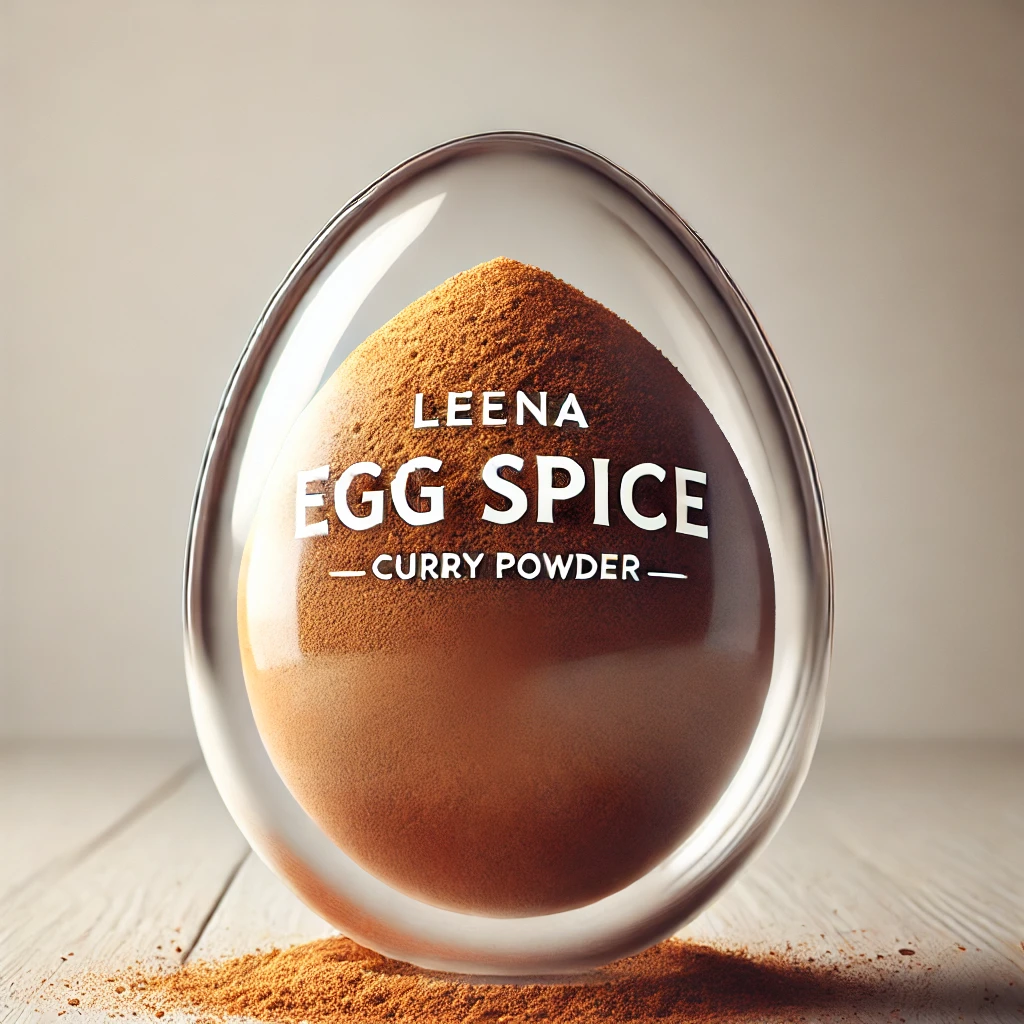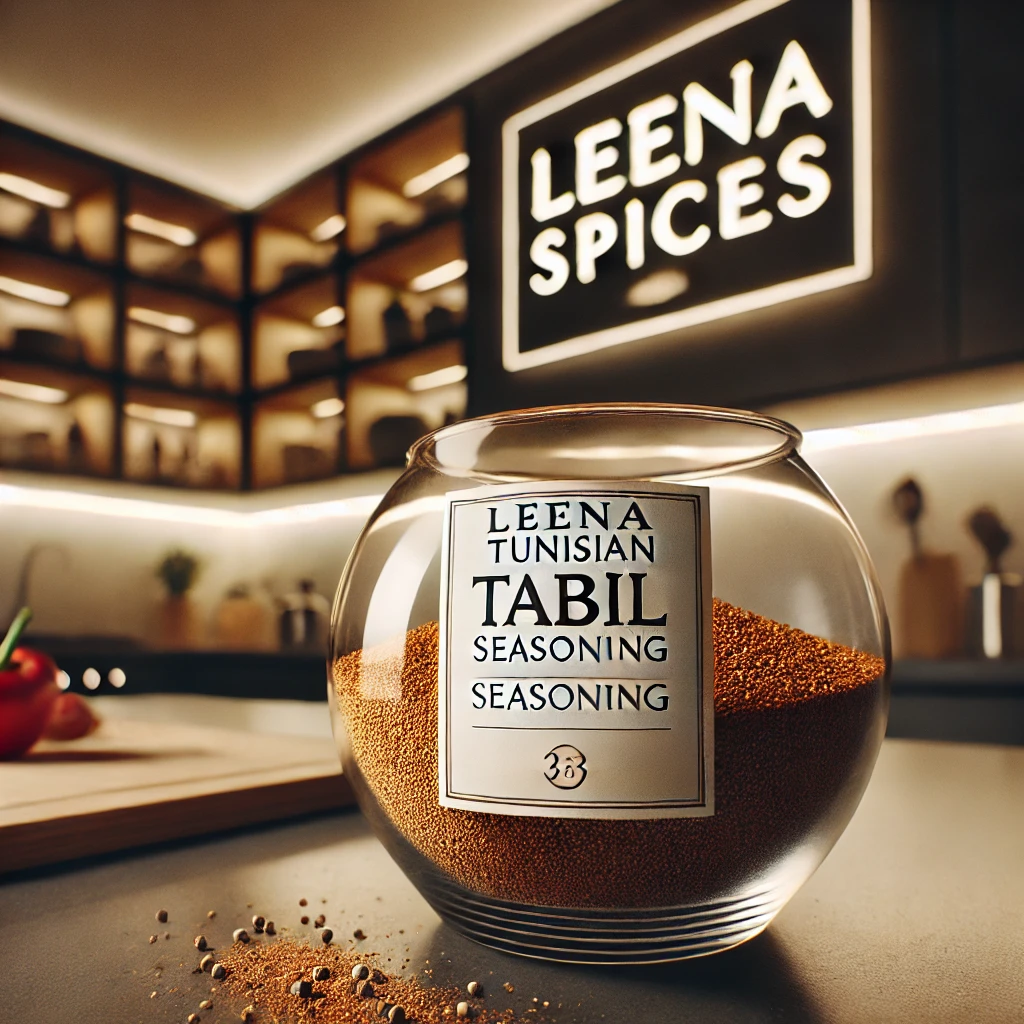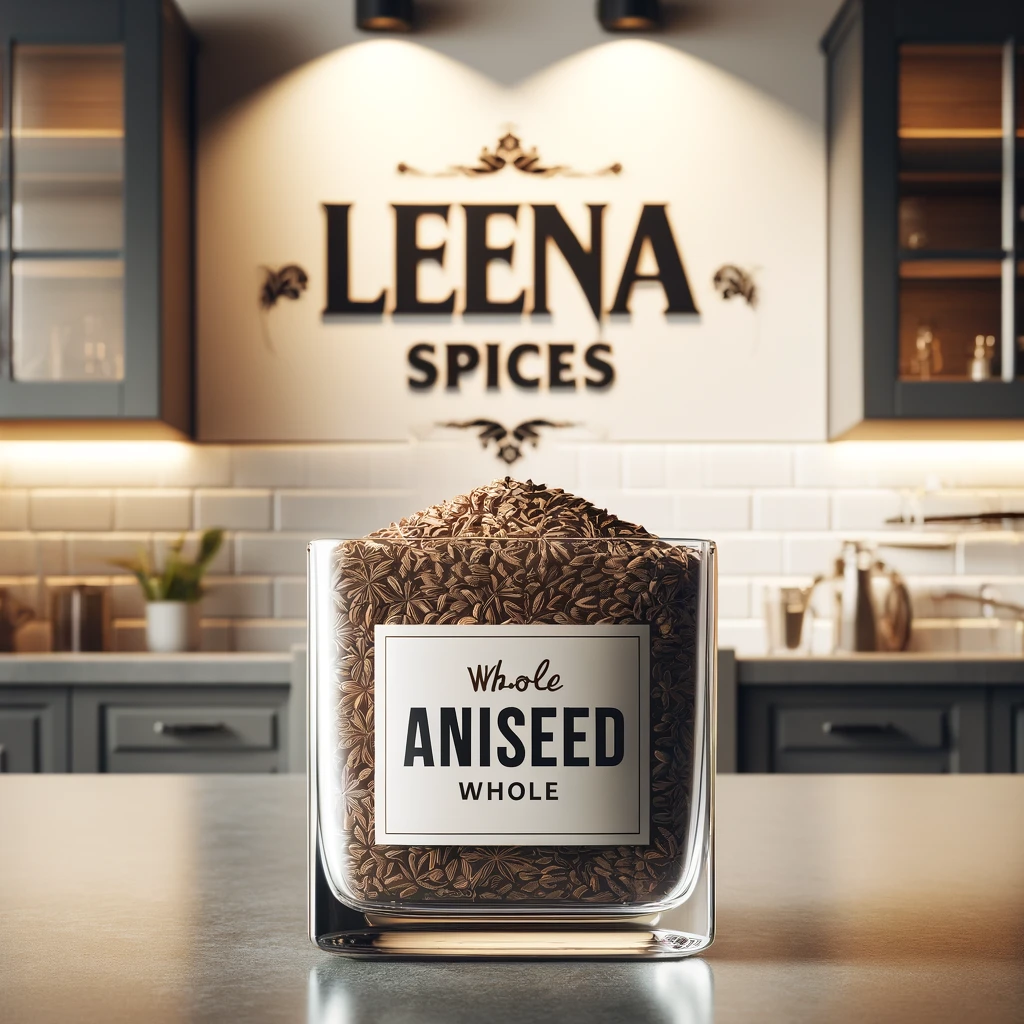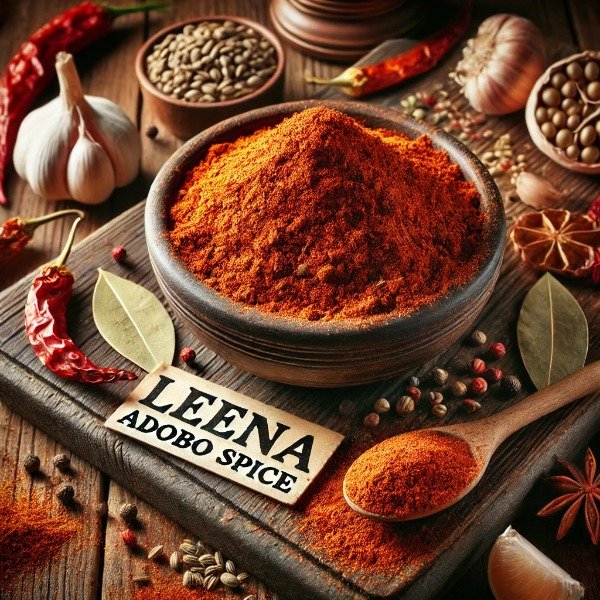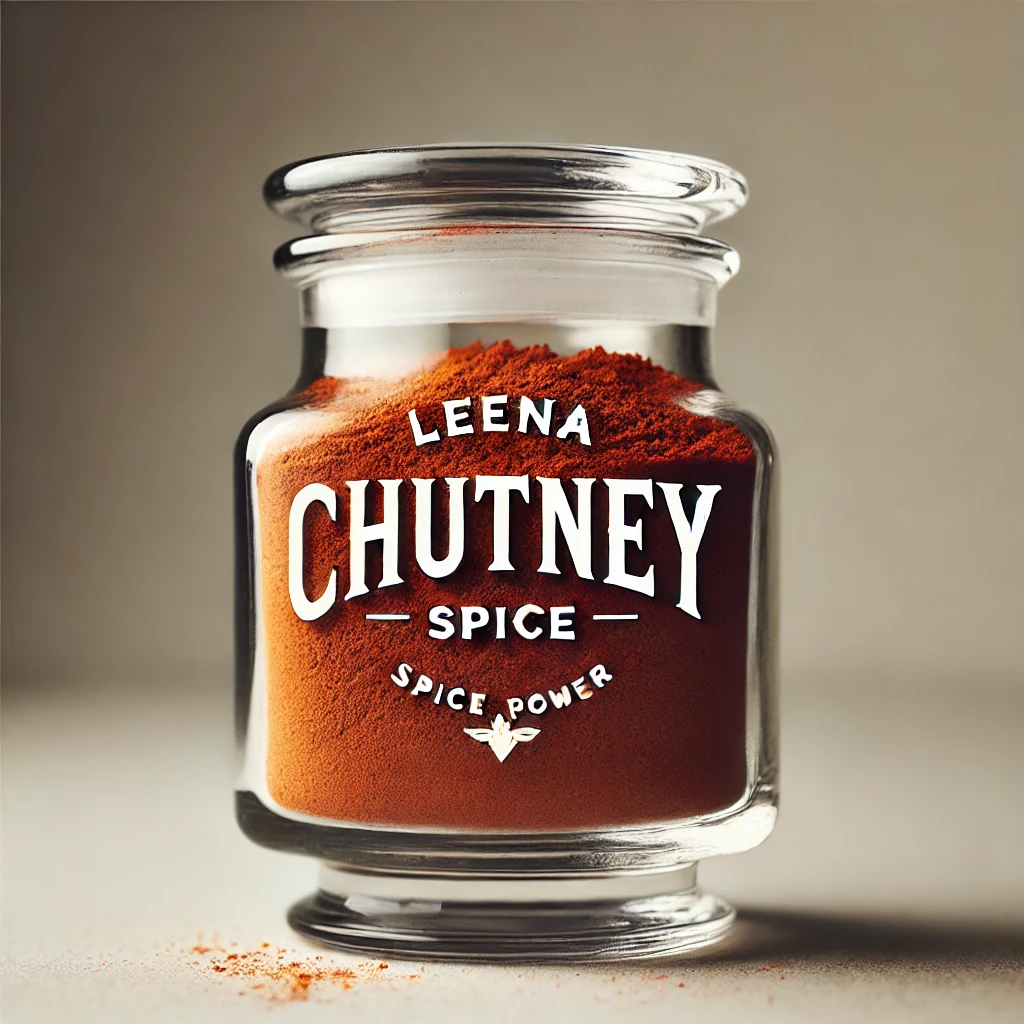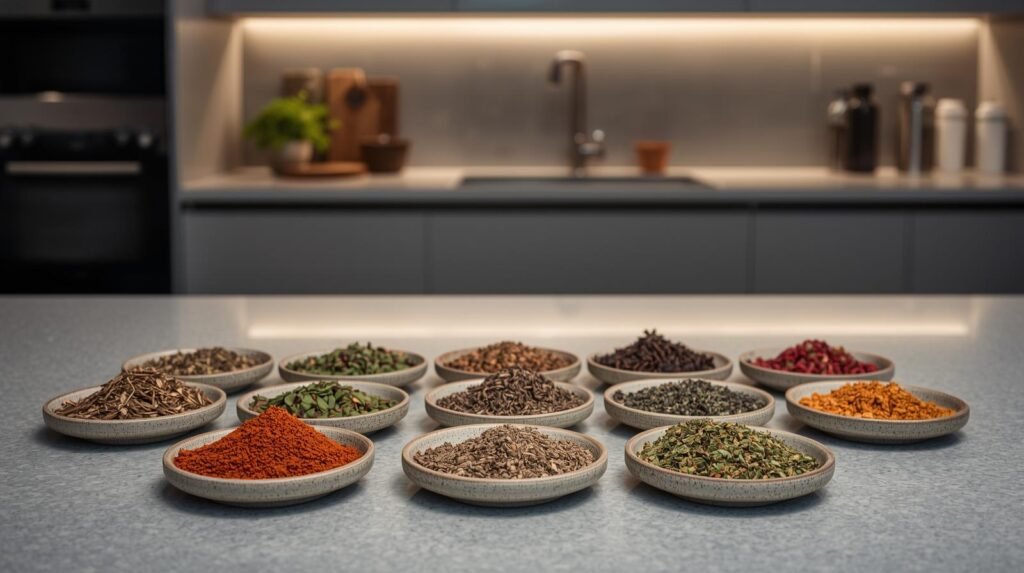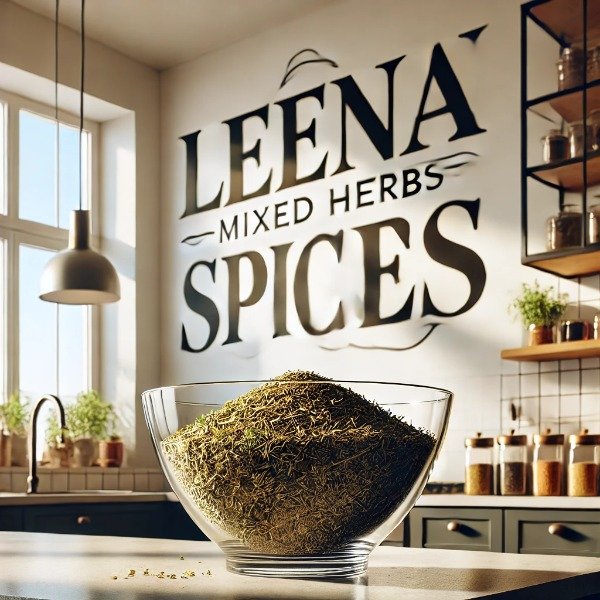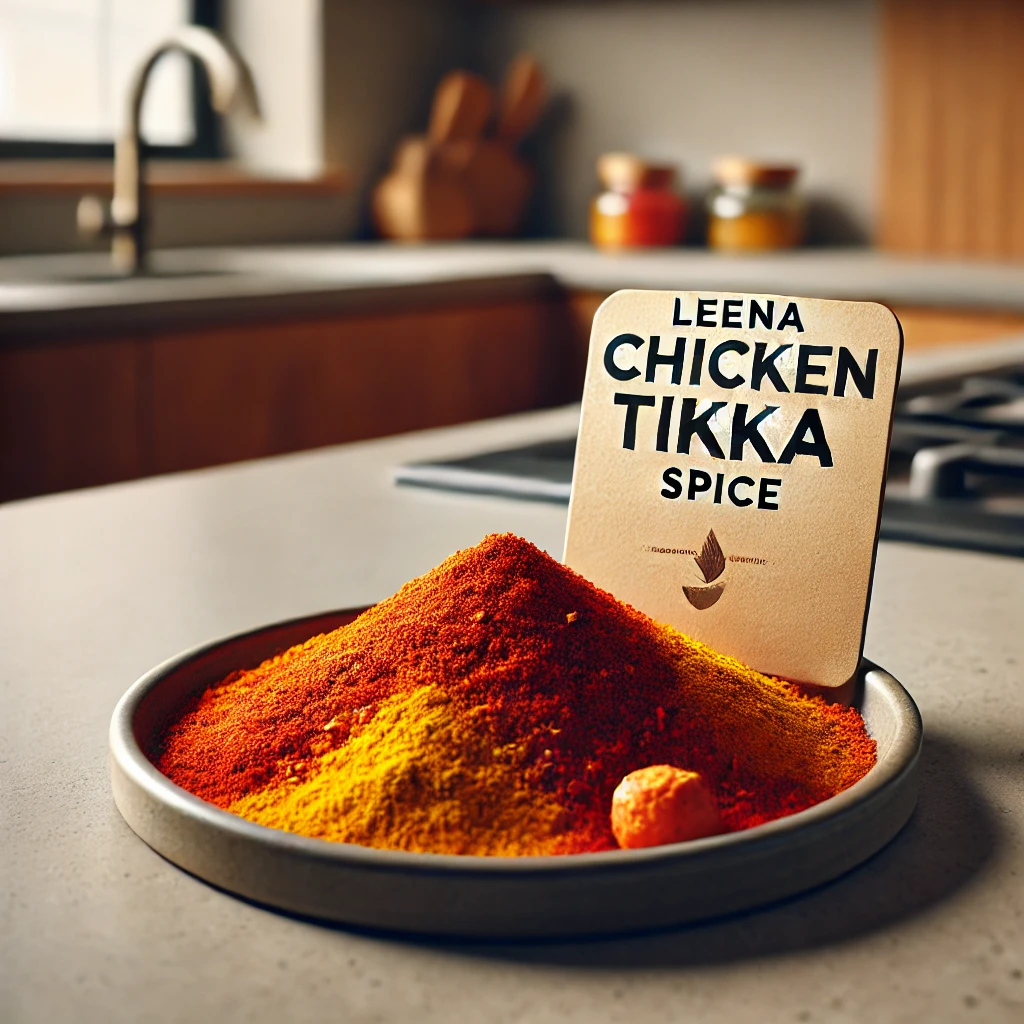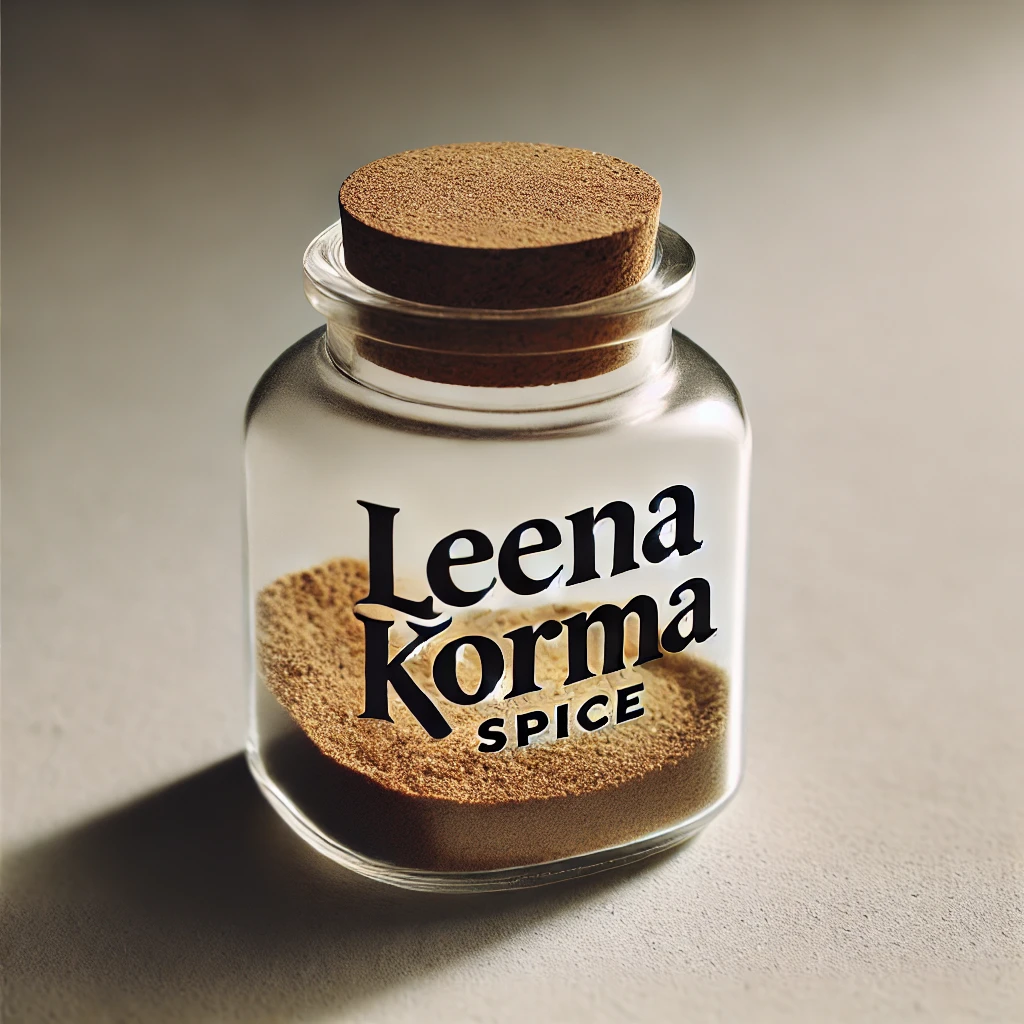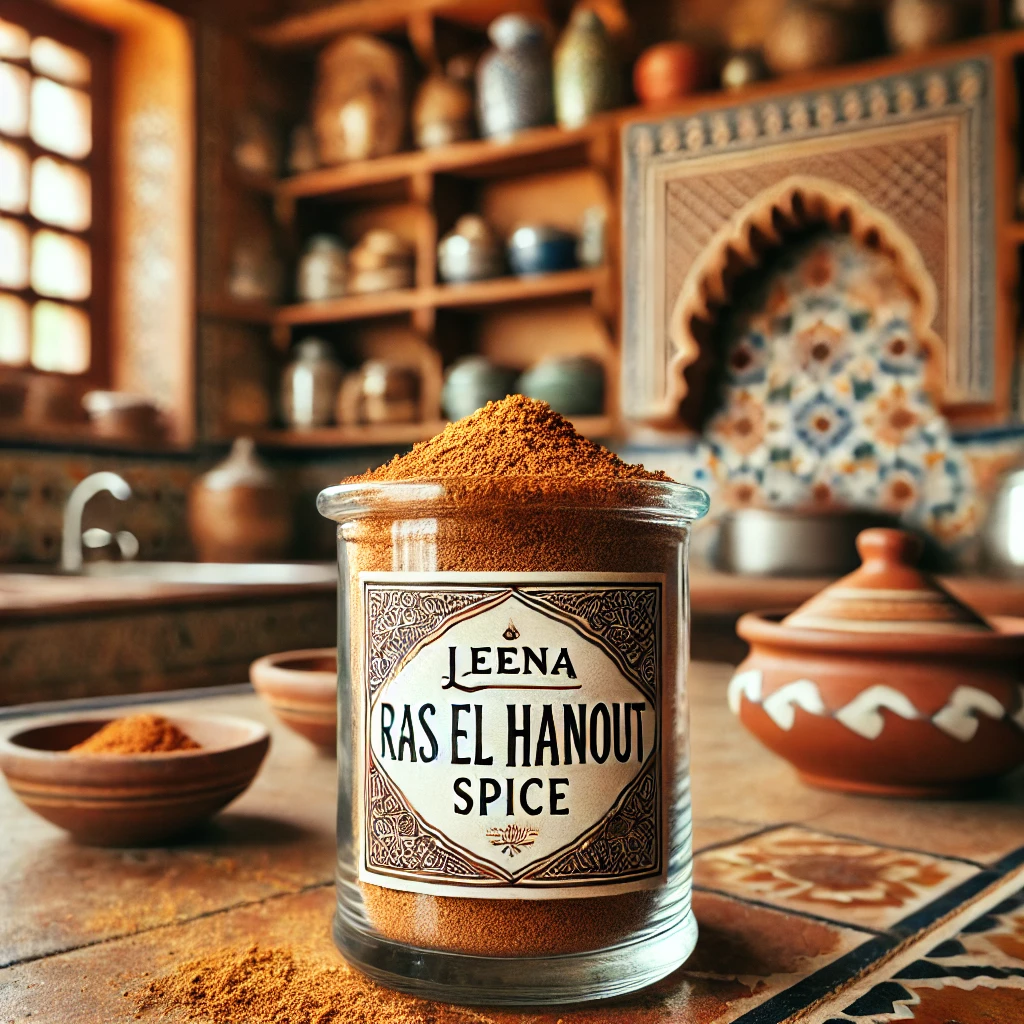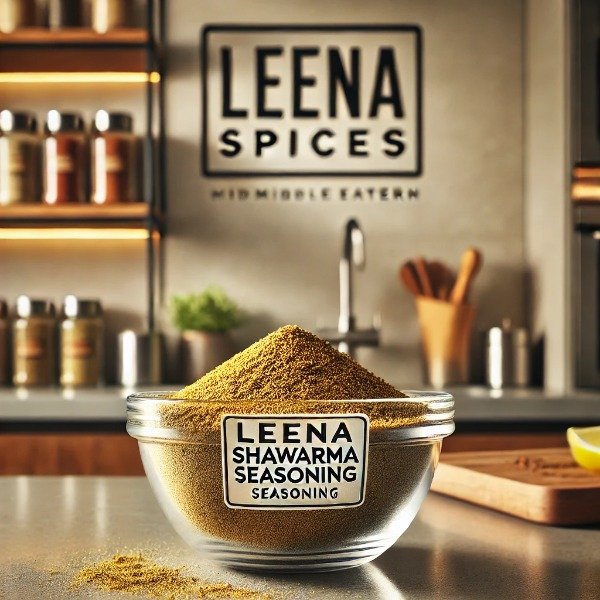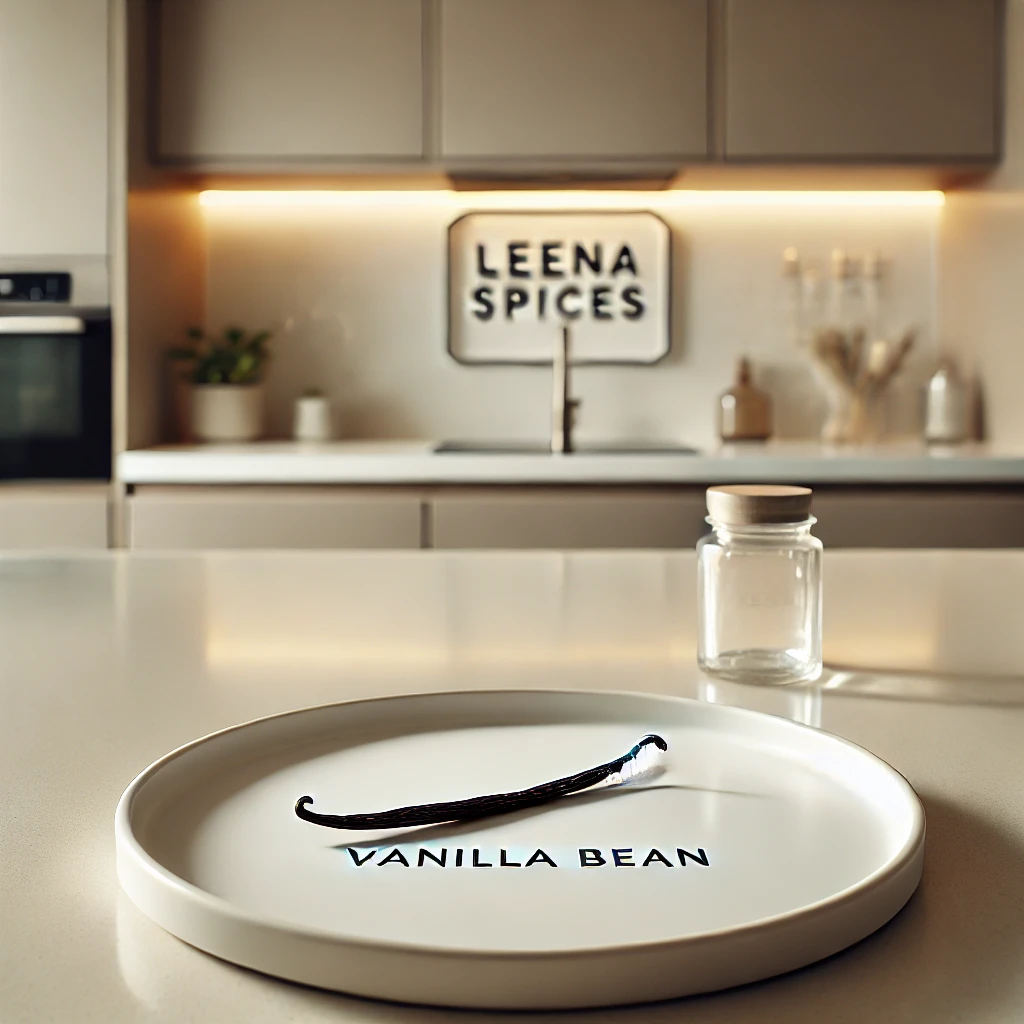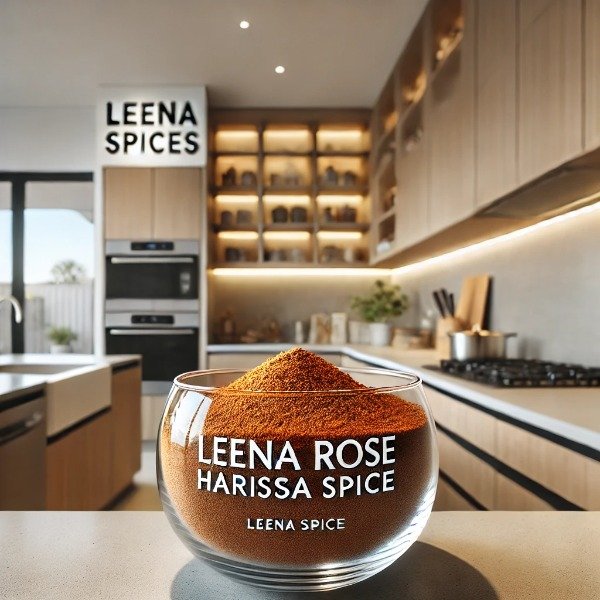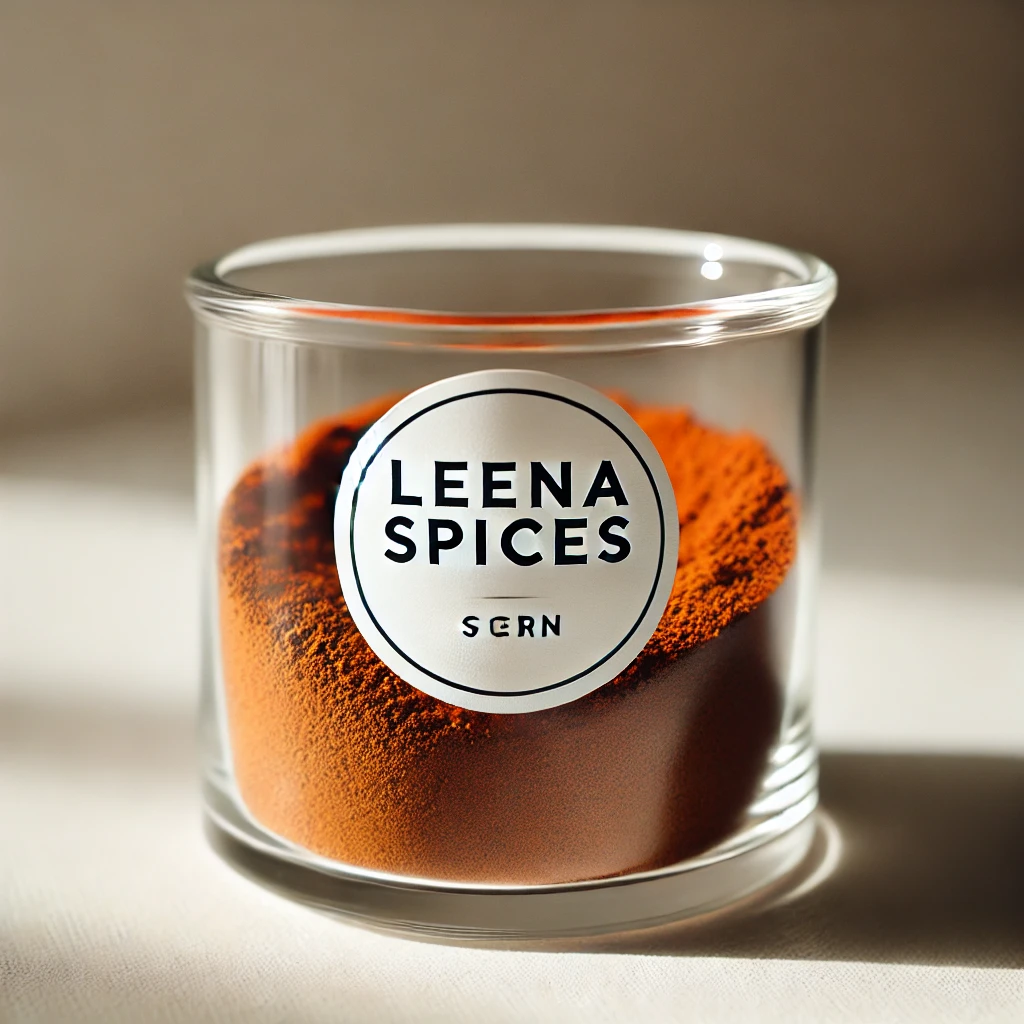10 Expert Tips for Buying, Storing, and Using Sumac Like a Pro
Table of Contents
- Introduction
- Key Takeaways About Sumac Spice
- What Is Sumac Spice?
- Where Does Sumac Come From?
- What Does Sumac Taste Like?
- What Is Sumac Used For?
- How to Use Sumac in Cooking
- Can I Buy Authentic Sumac Spice from Amazon?
- Does Sumac Spice Go Bad?
- How to Store Sumac for Best Freshness
- How to Revive or Use Older Sumac
- How to Identify Fake or Low-Quality Sumac
- Frequently Asked Questions (FAQs) About Sumac
- Conclusion
Introduction
Sumac is one of the most vibrant and versatile spices in Middle Eastern and Mediterranean cuisine, yet it often flies under the radar in kitchens around the world. With its deep red color, tangy, lemon-like flavor, and subtle fruity undertones, sumac brings a bright, zesty lift to a wide range of dishes — from salads and dips to grilled meats and roasted vegetables.
Unlike lemon juice or vinegar, sumac delivers acidity without adding moisture, making it ideal for dry rubs, spice blends, or a simple finishing sprinkle that enhances both flavor and presentation. Beyond its culinary uses, sumac carries a rich history, tracing back centuries as a natural souring agent and key ingredient in traditional recipes like fattoush salad and the classic spice blend za’atar.
Key Takeaways About Sumac Spice
What is sumac?
Sumac is a tangy, lemony spice made from the dried and ground berries of the Rhus coriaria shrub, native to the Mediterranean and Middle East.
What does sumac taste like?
It has a bright, tart, citrus-like flavor with subtle fruity, earthy, and slightly astringent notes — like lemon without the liquid.
How is sumac used in cooking?
Sumac can be sprinkled over salads, dips, grains, roasted vegetables, or eggs as a finishing spice, used in marinades and dry rubs for meats and fish, and incorporated into spice blends like za’atar.
Where does sumac come from?
Culinary sumac primarily comes from Turkey, Iran, Lebanon, Syria, and other Mediterranean countries.
How should sumac be stored?
Keep it in an airtight container in a cool, dark, and dry place. Avoid heat, light, and moisture to maintain its color, aroma, and tangy flavor.
Can sumac go bad?
While it won’t spoil like perishable foods, sumac loses potency, color, and aroma over time. Ground sumac is best within 1–2 years; whole berries can last 3–4 years.
How can I tell if sumac is authentic?
Authentic sumac is deep red, smells tangy and fruity, lists only sumac as an ingredient, and often comes from traditional Mediterranean or Middle Eastern regions.
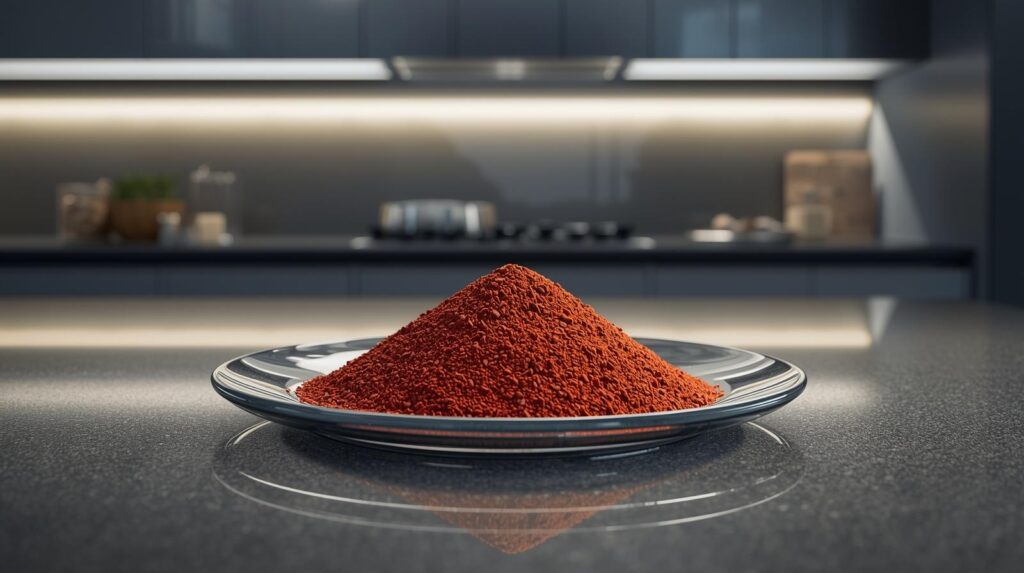
What Is Sumac Spice?
Sumac is a vibrant, tangy spice made from the dried and ground berries of the Rhus coriaria shrub, a plant native to the Mediterranean and parts of the Middle East. The spice is easily recognized by its deep red to burgundy color and its bright, lemony aroma.
In flavor, sumac delivers a clean, tart acidity similar to lemon juice, yet softer and slightly fruity, with subtle earthy undertones. It’s often used as a natural souring agent or finishing spice, adding both color and zest to food without overwhelming it.
A staple in Middle Eastern and Mediterranean cuisines, sumac enhances dishes like grilled meats, rice, roasted vegetables, salads, and dips such as hummus. It also plays a key role in traditional spice blends like za’atar, where it balances herbs and sesame with a citrusy lift.
Unlike the toxic varieties of wild sumac found in some regions, culinary sumac is completely safe to eat. The berries are harvested when ripe, sun-dried, and ground into a coarse powder that preserves their distinctive tart flavor and rich color.
Where Does Sumac Come From?
Sumac spice is derived from the dried and ground berries of the Rhus coriaria shrub, a plant native to the Mediterranean basin and Western Asia. These shrubs can grow several meters tall and bear clusters of small, red berries that ripen in late summer. Once harvested, the berries are sun-dried for about a week, then ground into a coarse, deep-red powder, the form most commonly used in cooking.
The finest culinary sumac is produced in countries such as Turkey, Iran, Lebanon, Syria, Greece, and Sicily, where it has long been part of traditional Middle Eastern and Mediterranean cuisine. Turkey, in particular, is known for producing high-quality sumac with a balanced tartness and rich color.
Historically, sumac was used as a natural souring agent long before lemons became common in Europe, making it one of the oldest seasonings in the region. While many species of sumac grow around the world — including North American varieties like staghorn sumac — the type used for culinary purposes is almost always Rhus coriaria.
It’s also worth noting that poison sumac, which bears white berries and grows in swampy areas of North America, is a completely different species and is not edible. Culinary sumac, by contrast, is entirely safe and valued for its tart, citrus-like flavor and beautiful red hue.
What Does Sumac Taste Like?
Sumac has a bright, tangy, and lemony flavor that brings a clean, refreshing acidity to food — similar to lemon zest but without the sharp bite of citrus or vinegar. Its tartness is gentle and balanced, offering a fruity, slightly earthy note that adds depth rather than dominance.
This spice is also mildly astringent, a quality that gives it a dry, mouth-cleansing feel similar to a sip of red wine. That subtle tannic edge makes it particularly effective for cutting through the richness of meats, oils, or creamy dishes.
Unlike liquid souring agents such as lemon juice, sumac adds a dry, concentrated form of acidity, making it ideal for rubs, marinades, or as a finishing sprinkle. It enhances the natural flavors of grilled meats, salads, dips, and roasted vegetables, lending both a pop of color and a zesty lift.
What Is Sumac Spice Used For?
Sumac is a remarkably versatile spice valued for its tangy, lemon-like flavor and deep red color. In Middle Eastern and Mediterranean cuisines, it’s often used as a natural way to add brightness and acidity to food without relying on lemon juice or vinegar.
One of the most popular uses of sumac is as a finishing touch — sprinkled over dishes just before serving to enhance both flavor and appearance. It’s a key ingredient in fattoush, a traditional Middle Eastern salad, and is frequently dusted over hummus, baba ganoush, grilled meats, and kebabs to provide a fresh, zesty lift.
Sumac also works beautifully in marinades and dry rubs for chicken, lamb, or fish, where its gentle tartness helps tenderize and balance the richness of the meat. It can be stirred into yogurt, dressings, and sauces for a mild tang or added to roasted vegetables, rice, and grain dishes for a pop of color and brightness.
Beyond savory dishes, sumac occasionally appears in desserts and beverages, offering a subtle, fruity sourness. In some Middle Eastern regions, it’s used to make a refreshing drink known as sumac lemonade, prized for its naturally tart flavor.
Sumac is also an essential component of the spice blend za’atar, where it harmonizes with thyme, sesame, and other herbs to create one of the most iconic seasonings in Mediterranean cooking.
How do I use sumac spice in cooking?
1. As a Finishing Spice
This is the most common and easiest way to use sumac. Sprinkle it on dishes just before serving to add a burst of tangy freshness and a pop of color.- Salads: A must-have for fattoush and tomato-cucumber salads.
- Dips: Dust over hummus, baba ghanoush, or labneh with a drizzle of olive oil.
- Eggs and Avocado Toast: Add a pinch for a bright, zesty lift.
- Roasted Vegetables: Sprinkle on hot potatoes, cauliflower, carrots, or eggplant for a tart contrast.
- Rice and Grains: Finish off pilafs, couscous, or quinoa for added depth and color.
2. In Marinades and Rubs
Sumac holds its flavor under heat, making it perfect for marinades or dry rubs. Its acidity helps tenderize meat while balancing richness.- Chicken and Lamb: Mix sumac with olive oil, garlic, cumin, and paprika for a flavorful rub.
- Fish: Use as a dry coating for salmon or white fish before grilling or baking to create a citrusy crust.
- Vegetables: Toss root vegetables with olive oil and sumac before roasting for a tangy, savory glaze.
3. In Spice Blends
Sumac is a signature ingredient in za’atar, the classic Middle Eastern blend of sumac, thyme, sesame seeds, and salt. Use za’atar to season meats, vegetables, or flatbreads like manakeesh.4. In Dressings, Dips, and Sauces
Stir sumac into yogurt, tahini, or olive oil-based dressings for a mild acidity that balances creamy or nutty flavors. It works beautifully in vinaigrettes, replacing part of the lemon juice or vinegar.5. In Unique and Creative Uses
Sumac’s tang pairs wonderfully with both savory and sweet foods:- Sumac Onions: Toss thinly sliced red onions with sumac, salt, and parsley for a sharp, colorful condiment — perfect with kebabs or wraps.
- Popcorn and Snacks: Sprinkle sumac over popcorn or roasted nuts for a citrusy twist.
- Desserts: Add a pinch to fruit salads, baked goods, or even ice cream for a subtle, tart accent.
Key Tip: Sumac vs. Lemon Juice
Use sumac when you want a dry, gentle tartness that adds color and flavor without liquid. Choose lemon juice when you need a strong, wet acidity — for example, in drinks or sauces.Can I Buy Authentic Sumac Spice from Amazon?
Yes, you can absolutely buy authentic sumac spice from Amazon. The platform offers a wide range of options, including imported and organic varieties from reputable Middle Eastern and Mediterranean brands. Many listings specify the spice’s country of origin — often Turkey, Iran, or Lebanon — which helps confirm authenticity.
Because sumac quality can vary greatly, it’s important to know what to look for before buying.
What to Look for When Buying Authentic Sumac
- Deep, Vibrant Color
Genuine sumac should have a rich red or burgundy hue. A dull or brownish color usually means the spice is old or has lost its signature tart flavor. - Pure Ingredients
Always check the ingredient list. Authentic sumac should contain only sumac — or occasionally sumac and salt if it’s a salted version.- Avoid: Products that list citric acid, rice flour, or artificial coloring, as these are often used to mimic the tanginess of real sumac or stretch the product.
- Country of Origin
The best culinary-grade sumac comes from Rhus coriaria shrubs grown in regions such as Turkey, Iran, Syria, and Lebanon. Choosing products that clearly state one of these origins increases the likelihood of getting genuine, high-quality sumac. - Reputable Brands and Sellers
Look for well-known spice brands or specialty Middle Eastern suppliers with strong customer feedback. Read reviews that mention the flavor, aroma, and freshness of the spice — these are reliable indicators of authenticity.
Why Buy from Amazon?
Amazon’s wide selection, verified reviews, and convenient delivery make it a practical place to find real sumac, especially if you don’t have access to a local Middle Eastern grocery or specialty spice shop. Just take a few moments to read the details and reviews before purchasing to ensure you’re getting the genuine product.
Does Sumac Spice Go Bad?
Like most dried spices, sumac doesn’t “go bad” in a way that makes it unsafe to eat, but it does lose its flavor, aroma, and color over time. The real concern isn’t spoilage — it’s losing that signature tangy, lemony brightness that makes sumac special.
When fresh, sumac has a deep red color, a pleasantly tart aroma, and a zesty, fruity taste. As it ages, exposure to light, air, and moisture causes it to fade in both color and flavor.
Shelf Life of Sumac
- Ground Sumac: Best used within 2 to 3 years. After that, it’s still safe, but the flavor will be noticeably weaker.
- Whole Sumac Berries: Can retain their quality for 3 to 4 years or longer, since less surface area is exposed to air.
How to Tell If Sumac Has Lost Its Potency
- Smell Test:
Fresh sumac should have a tangy, citrusy aroma with subtle fruity notes. If it smells faint, stale, or dusty, it has likely lost its flavor. - Color Test:
Authentic, fresh sumac appears deep red or burgundy. If it looks dull, brownish, or faded, it’s past its prime. - Taste Test:
Rub a small pinch between your fingers and taste it. If it no longer delivers that bright, tart zing, it’s time to replace it.
How to Store Sumac for Best Freshness
Proper storage is essential to preserve sumac’s vibrant color, tangy flavor, and fruity aroma. Like all spices, sumac is sensitive to air, light, heat, and moisture — the four main factors that cause spices to lose their quality over time.
1. Use an Airtight Container
Always store sumac in a tightly sealed container, such as a glass jar or metal spice tin with a secure lid. This prevents air from dulling its flavor and helps retain the natural oils that give sumac its signature tang.
2. Keep It Cool, Dark, and Dry
- Temperature: Store sumac in a cool location, away from heat-producing appliances such as the stove, oven, or dishwasher.
- Light: Avoid direct sunlight or bright kitchen light, which can fade its rich red-purple color and reduce its potency. A pantry, drawer, or cupboard is ideal.
- Moisture: Keep the area dry. Moisture is one of the biggest enemies of ground spices and can lead to clumping or even mold growth.
Important: Do not refrigerate ground sumac. Frequent temperature changes when opening the container can cause condensation, which ruins the spice.
3. Handle With Care
Always use a clean, completely dry spoon when scooping sumac to prevent introducing moisture or contaminants. Even a small amount of water can cause spoilage or clumping.
4. Buy the Right Amount
If you use sumac regularly, it’s best to buy it in small quantities and replace it once a year to ensure maximum freshness.
For longer shelf life, consider buying whole sumac berries and grinding them as needed — whole spices naturally retain their flavor and aroma longer than pre-ground ones.
Shelf Life and Freshness Check
- Ground Sumac: Best within 1 to 2 years when stored properly.
- Whole Sumac Berries: Can last 3 to 4 years or longer with minimal loss of quality.
To check freshness, look for bright color, a citrusy aroma, and a sharp tangy taste. If the spice appears dull, smells faint, or tastes flat, it’s time for a replacement.
How to Revive or Use Older Sumac
1. Toast It Lightly
Place the spice in a dry skillet over low heat for a few seconds. Gently warming sumac can help release any remaining essential oils and revive its aroma. Be careful not to overheat it, as excessive heat will destroy what’s left of its delicate flavor compounds.2. Combine With Acidic Ingredients
Even if the flavor has faded, older sumac can still enhance dishes when paired with lemon juice, vinegar, or tamarind. These ingredients bring back some of the tart brightness that fresh sumac naturally provides.3. Use in Marinades and Rubs
Older sumac can still contribute mild color and background flavor when used in marinades, dry rubs, or seasoning blends for meats, fish, or vegetables. It won’t dominate the dish, but it will add a subtle depth that complements other spices.4. Blend Into Spice Mixes
If your sumac isn’t as vibrant as before, try blending it into Za’atar, Baharat, or other spice blends. Mixed with herbs and sesame seeds, it still lends mild acidity and color without overpowering the mix.5. Taste and Adjust
Before adding older sumac to a dish, taste a small pinch. If the flavor seems weak, simply use a bit more than the recipe calls for. However, if it has a musty or dusty smell, it’s best to replace it entirely.How to Identify Fake or Low-Quality Sumac
1. Check the Color
Authentic sumac has a deep red to burgundy hue. If the powder appears dull, brownish, or faded, it may be old, poorly processed, or mixed with fillers. Bright, vibrant color is often a good indicator of freshness and quality.2. Examine the Ingredients
High-quality sumac should list only “sumac” (or occasionally sumac and salt). Avoid products that include additives like citric acid, rice flour, or artificial coloring. These are sometimes added to imitate tanginess or bulk up cheaper products.3. Smell the Aroma
Fresh sumac has a tangy, citrus-like aroma with subtle fruity undertones. If it smells weak, dusty, or flat, the spice may have lost its potency or been improperly stored.4. Know the Origin
Culinary-grade sumac primarily comes from Rhus coriaria grown in regions like Turkey, Iran, Lebanon, Syria, and parts of the Mediterranean. Labels that specify these origins are generally more trustworthy than those with vague or missing sourcing information.5. Buy From Reputable Sellers
Choose established brands or specialty Middle Eastern spice vendors. Check customer reviews for comments on flavor, freshness, and color — these can be reliable indicators of authenticity.6. Watch Out for Poison Sumac
Be aware that poison sumac, which has white berries and grows in swampy areas of North America, is toxic and completely inedible. Culinary sumac (Rhus coriaria) is safe to eat and distinct in both color and flavor.Frequently Asked Questions About Sumac
Can sumac be used in sweet dishes?
Yes! While sumac is best known for savory applications, its mild tartness and fruity notes can complement desserts like fruit salads, baked goods, or even ice cream. It adds a subtle citrusy flavor without overpowering sweetness.
Is sumac gluten-free and safe for special diets?
Absolutely. Pure sumac is naturally gluten-free, vegan, and free from common allergens, making it suitable for a wide range of diets. Just check that pre-blended mixes, like some za’atar products, don’t contain wheat or other additives.
Can I grind whole sumac berries at home?
Yes. Grinding whole sumac berries just before use preserves the spice’s aroma and tang. Use a mortar and pestle or spice grinder for the freshest flavor, especially if you buy in bulk.
How does sumac compare to other souring agents like lemon or vinegar?
Sumac offers a dry, mild tartness that enhances flavor without adding liquid. Lemon juice or vinegar provide stronger, wet acidity, which is better for dressings, sauces, or beverages where moisture is needed.
Can sumac be used in beverages?
Yes. In some Middle Eastern regions, sumac is steeped in water with sugar or honey to make a refreshing, tart drink similar to lemonade, often served cold.
Does cooking affect sumac’s flavor?
Prolonged heat can diminish sumac’s tangy brightness. For best results, use it as a finishing spice or add it toward the end of cooking. It can withstand brief exposure to heat in marinades or rubs without losing too much flavor.
Can sumac be mixed with other spices?
Definitely. Sumac pairs beautifully with thyme, sesame seeds, paprika, cumin, garlic, and chili flakes. It’s an essential ingredient in za’atar and works well in custom spice blends for meats, vegetables, and dips.
How do I know if sumac has gone bad?
While it won’t become unsafe, sumac loses its tang, aroma, and vibrant color over time. Signs it has weakened include dull red-brown color, faint scent, or a flat, tasteless zing.
Conclusion
Sumac is more than just a spice — it’s a versatile, flavor-enhancing ingredient that can transform everyday dishes with its tangy, lemony brightness and subtle fruity undertones. From sprinkling it over salads and dips to incorporating it into marinades, rubs, and spice blends, sumac adds depth, color, and a refreshing zing without overpowering your food. Understanding its origin, flavor profile, and proper storage ensures you get the most out of this vibrant spice, while knowing how to spot authentic, high-quality sumac guarantees consistent results in your cooking. Whether you’re exploring Middle Eastern flavors for the first time or looking to elevate familiar recipes, sumac offers a simple yet powerful way to brighten every meal.

